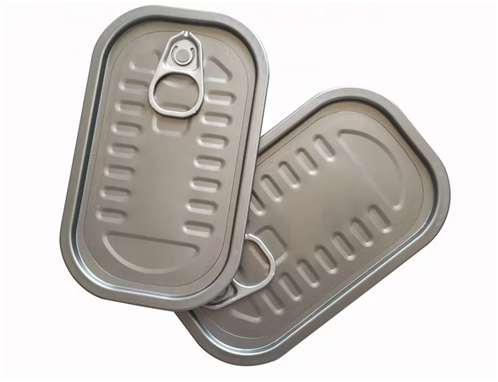Canlid’s empty sardine cans are made from tinplate, which is an excellent material for food preservation. In addition, we offer a range of sizes for our empty cans to meet the needs of different customers. In this article, we’ll show you how to seal empty tin cans with Canlid and sardines.
Empty sardine cans made of tinplate
Tinplate is a material made from thin sheets of metal that are heated to high temperatures and then formed into any desired shape. Tinplate is commonly used to make cans, boxes, and other containers. Tinplate packaging materials have good sealing, gas barrier, moisture resistance, light shading, taste retention, and reliable sealing, which can protect food.
Tips for packing sardines with empty sardines
If you’re looking for an eco-friendly way to pack sardines, consider using an empty sardine can. Here are four tips:
1. The tinplate must be inspected before cutting to ensure that it meets the requirements. Also, the jar must be thoroughly cleaned before use.
2. Use a hot glue gun or other adhesive to seal the opening of the jar. Be sure to cover all sides of the hole to prevent air from escaping during shipping and storage.
3. Canned sardines can be stored after plating and packaging.
Different types of canning lids
The most common type is the flat cap, which is the most popular because it is the easiest to use. It fits snugly against the can and seals tightly with the lid and can. Flat lids are not recommended for thick-bottomed jars, as the pressure of boiling water can cause them to burst.
Another type of cap is the screw cap, which has two parts that screw onto the top of the jar. When you put this type of lid on the jar, it creates a vacuum seal between the lid and the jar. This type of lid is recommended for preserving foods with high concentrations of acid or for prolonged storage
The third type of cap is the ring seal cap, which is similar to a screw cap but has a ring around the rim to create a tighter seal. Ring seal lids are ideal for food stored in liquid or vacuum-sealed containers.
Why seal food with peel-off ends?
Food safety is always of the utmost importance. You might want to seal food with peelable ends for several reasons.
The first reason is that these ends usually preserve the tastiest part of the food. By sealing your food this way, you lock in all the flavor and prevent it from going bad.
Another reason to seal foods with peel ends is that they are a natural barrier against bacteria. By sealing food in this way, you prevent bacteria from entering the food.
Finally, if you want to keep food fresher for longer, seal with peelable ends. By sealing foods with peelable ends, you can keep them fresh for up to several weeks.
Why does food sealing require canning lids?
Canning lids are a necessary part of food sealing because they create an airtight seal between the food and the can. This seal prevents the ingress of air and moisture that can lead to food spoilage and can also reduce the incidence of foodborne illness.
Without proper sealing, bacteria can grow and cause food to spoil. Bacteria cause spoilage by metabolizing food, producing acids that break down cell walls and produce toxic compounds.
Conclusion
Empty cans of sardines are a great option for customers who want to pursue cost-effective packaging. Not only do they look impressive, but they also protect the products inside from damage and contamination. Empty sardine cans are also an eco-friendly and sustainable way to pack food. If you are interested in these cans, please contact Canlid today.







